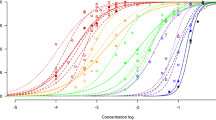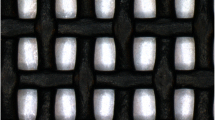Abstract
Culicoides (Diptera: Ceratopogonidae) biting midges may transmit various diseases of economic importance, including bluetongue virus (BTV) and Schmallenberg (SV) virus, which affect ruminants. During the outbreak of BTV in central and northern Europe in 2006, and in the absence of BTV vaccines, many national veterinary services recommended the treatment of susceptible livestock with pyrethroids as a first-line defense against biting midges, although these insecticides were officially not registered and authorized for use against Culicoides midges. The efficacy of Butox® pour on (7.5 mg deltamethrin/mL) against biting midges was therefore evaluated in a double-blinded GCP field trial performed in Brandenburg, Germany. Forty female Merino sheep with an average body weight of 38 kg (±7 kg) were used for the study. Twenty randomly selected sheep were treated with 10 mL Butox® pour on. The remaining 20 sheep were left untreated and served as a control group. Midge collections took place in two separate drop traps covering two crush pens with three confined treated/untreated sheep standing inside, on weekdays at 1, 7, 14, 21, 28, and 35 days post treatment. A total of 19,057 midges were collected during this period. Midges were identified as belonging to the subgenus Avaritia, Fox (84.6 %) and subgenus Culicoides, Latreille (15.4 %). A total of 12,031 midges were collected inside the drop trap containing untreated sheep, in comparison to 7,026 midges collected from the vicinity of the treated sheep. Significantly, more midges had fed on control compared to treated sheep with 757 and 103 engorged midges, respectively. The results indicate that treatment of sheep with Butox® pour on provided a significant decrease in Culicoides feeding rates under field conditions for at least 35 days.
Similar content being viewed by others
References
Anonymous (2012) Qualitative Risikobewertung zum Risiko des Wiederauftretens der Blauzungenkrankheit in Deutschland, Stand März 2012. Friedrich-Loeffler-Institut, Greifswald
Ayllon T, Nijhof AM, Weiher W, Bauer B, Allene X, Clausen PH (2014) Feeding behaviour of Culicoides spp. (Diptera: Ceratopogonidae) on cattle and sheep in northeast Germany. Parasit Vectors 7(1):34
Bauer B, Amsler-Delafosse S, Kabore I, Kamuanga M (1999) Improvement of cattle productivity through rapid alleviation of African animal trypanosomosis by integrated disease management practices in the agropastoral zone of Yale, Burkina Faso. Trop Anim Health Prod 31(2):89–102
Boorman J (1993) Biting midges (Ceratopogonidae). In: Lane RP, Crosskey RW (eds) Medical insects and arachnids. Chapman & Hall, London, p 723
Carpenter S, Mellor P, Torr S (2007) Bluetongue and midge control. Vet Rec 161(18):633–633
Carpenter S, McArthur C, Selby R, Ward R, Nolan DV, Luntz AJ, Dallas JF, Tripet F, Mellor PS (2008a) Experimental infection studies of UK Culicoides species midges with bluetongue virus serotypes 8 and 9. Vet Rec 163(20):589–592
Carpenter S, Mellor PS, Torr SJ (2008b) Control techniques for Culicoides biting midges and their application in the U.K. and northwestern Palaearctic. Med Vet Entomol 22(3):175–187
Carpenter S, Szmaragd C, Barber J, Labuschagne K, Gubbins S, Mellor P (2008c) An assessment of Culicoides surveillance techniques in northern Europe: have we underestimated a potential bluetongue virus vector? J Appl Ecol 45(4):1237–1245
Conraths FJ, Gethmann JM, Staubach C, Mettenleiter TC, Beer M, Hoffmann B (2009) Epidemiology of bluetongue virus serotype 8, Germany. Emerg Infect Dis 15(3):433–435
Delécolle JC (1985) Nouvelle contribution à l’étude systematique et iconographique des espèces du genre Culicoides (Diptera: Ceratopogonidae) du nord-est de la France. Thèse, Université Louis Pasteur de Strasbourg, UER Sciences, Vie et Terre, 238 pp
Doherty WM, Bishop AL, Melville LF, Johnson SJ, Bellis GA, Hunt NT (2004) Protection of cattle from Culicoides spp. in Australia by shelter and chemical treatments. Vet Ital 40(3):320–323
Falconi C, Lopez-Olvera JR, Gortazar C (2011) BTV infection in wild ruminants, with emphasis on red deer: a review. Vet Microbiol 151(3–4):209–219
Griffioen K, van Gemst DB, Pieterse MC, Jacobs F, Sloet van Oldruitenborgh-Oosterbaan MM (2011) Culicoides species associated with sheep in the Netherlands and the effect of a permethrin insecticide. Vet J 190(2):230–235
Hoffmann B, Bauer B, Bauer C, Batza HJ, Beer M, Clausen PH, Geier M, Gethmann JM, Kiel E, Liebisch G, Liebisch A, Mehlhorn H, Schaub GA, Werner D, Conraths FJ (2009) Monitoring of putative vectors of bluetongue virus serotype 8, Germany. Emerg Infect Dis 15(9):1481–1484
Larska M, Lechowski L, Grochowska M, Zmudzinski JF (2013) Detection of the Schmallenberg virus in nulliparous Culicoides obsoletus/scoticus complex and C. punctatus—the possibility of transovarial virus transmission in the midge population and of a new vector. Vet Microbiol 166(3–4):467–473
Mehlhorn H, Schmahl G, D’Haese J, Schumacher B (2008) Butox 7.5 pour on: a deltamethrin treatment of sheep and cattle: pilot study of killing effects on Culicoides species (Ceratopogonidae). Parasitol Res 102(3):515–518
Mehlhorn H, Walldorf V, Klimpel S, Schaub G, Kiel E, Focke R, Liebisch G, Liebisch A, Werner D, Bauer C, Clausen H, Bauer B, Geier M, Horbrand T, Batza HJ, Conraths FJ, Hoffmann B, Beer M (2009) Bluetongue disease in Germany (2007–2008): monitoring of entomological aspects. Parasitol Res 105(2):313–319
Meiswinkel R, Baldet T, de Deken R, Takken W, Delecolle JC, Mellor PS (2008) The 2006 outbreak of bluetongue in northern Europe—the entomological perspective. Prev Vet Med 87(1–2):55–63
Mellor PS, Boorman J, Baylis M (2000) Culicoides biting midges: their role as arbovirus vectors. Annu Rev Entomol 45:307–340
Mullens BA, Velten RK, Gerry AC, Braverman Y, Endris RG (2000) Feeding and survival of Culicoides sonorensis on cattle treated with permethrin or pirimiphos-methyl. Med Vet Entomol 14(3):313–320
Mullens BA, Gerry AC, Monteys VS, Pinna M, Gonzalez A (2010) Field studies on Culicoides (Diptera: Ceratopogonidae) activity and response to deltamethrin applications to sheep in northeastern Spain. J Med Entomol 47(1):106–110
Nielsen SA, Nielsen BO, Chirico J (2010) Monitoring of biting midges (Diptera: Ceratopogonidae: Culicoides Latreille) on farms in Sweden during the emergence of the 2008 epidemic of bluetongue. Parasitol Res 106(5):1197–1203
Olbrich S (1987) Untersuchungen zur Biologie von Gnitzen der Gattung Culicoides Latreille (Diptera: Ceratopogonidae) an Weiderindern in Norddeutschland. Ergebnisse aus dem Freiland und dem Laboratorium. Dissertation, Institut für Parasitologie, Universität Hannover
Rasmussen LD, Kristensen B, Kirkeby C, Rasmussen TB, Belsham GJ, Bodker R, Botner A (2012) Culicoids as vectors of Schmallenberg virus. Emerg Infect Dis 18(7):1204–1206
Rawlings P (1996) A key, based on wing patterns of biting midges (Genus Culicoides Latreille—Diptera: Ceratopogonidae) in the Iberian peninsula, for use in epidemiological studies. Graellsia 52:57–71
Sallovitz JM, Lifschitz A, Imperiale F, Virkel G, Lanusse C (2003) A detailed assessment of the pattern of moxidectin tissue distribution after pour-on treatment in calves. J Vet Pharmacol Ther 26(6):397–404
Schmahl G, Klimpel S, Walldorf V, Al-Quraishy S, Schumacher B, Jatzlau A, Mehlhorn H (2009) Pilot study on deltamethrin treatment (Butox 7.5, Versatrine) of cattle and sheep against midges (Culicoides species, Ceratopogonidae). Parasitol Res 104(4):809–813
Stendel W, Hamel HD, Sieveking HU, Bruhne D (1992) Analytical determination of the distribution of flumethrin on the body surface of cattle following topical pour-on application. Vet Parasitol 42(1–2):137–143
van der Rijt R, van den Boom R, Jongema Y, van Oldruitenborgh-Oosterbaan MM (2008) Culicoides species attracted to horses with and without insect hypersensitivity. Vet J 178(1):91–97
Venail R, Mathieu B, Setier-Rio ML, Borba C, Alexandre M, Viudes G, Garros C, Allene X, Carpenter S, Baldet T, Balenghien T (2011) Laboratory and field-based tests of deltamethrin insecticides against adult Culicoides biting midges. J Med Entomol 48(2):351–357
Viennet E, Garros C, Lancelot R, Allene X, Gardes L, Rakotoarivony I, Crochet D, Delecolle JC, Moulia C, Baldet T, Balenghien T (2011) Assessment of vector/host contact: comparison of animal-baited traps and UV-light/suction trap for collecting Culicoides biting midges (Diptera: Ceratopogonidae), vectors of Orbiviruses. Parasit Vectors 4:119
Weiher W, Nijhof AM, Bauer B, Mehlitz D, Clausen PH, Beer M, Hoffmann B (2012) Detection of Schmallenberg virus in Culicoides species of the Obsoletus complex in Germany. Paper presented at the Tagung der DVG - Fachgruppe Parasitologie und parasitäre Krankheiten 2012, Hannover, 4 July 2012
Acknowledgments
The study was funded by Intervet Pharma R&D, 49071 Beaucouzé, France. All activities in this investigation followed the principle of Good Clinical Practices (GCP) as outlined in the “International Cooperation on Harmonisation of Technical Requirements for the Registration of Veterinary Medicinal Products (VICH) guideline CVMP/VICH/595/98 VICH Topic GL9 Step 7—Guideline on Good Clinical Practices (CVMP approved July 2000).” We are further indebted to the management of the farm in Groß Kreutz, Brandenburg, Germany, for their cooperation and to Richard Hunter (Triveritas UK) and Peter Cox for their assistance in the design of the study.
Author information
Authors and Affiliations
Corresponding author
Rights and permissions
About this article
Cite this article
Weiher, W., Bauer, B., Mehlitz, D. et al. Field trials assessing deltamethrin (Butox®) treatments of sheep against Culicoides species. Parasitol Res 113, 2641–2645 (2014). https://doi.org/10.1007/s00436-014-3916-7
Received:
Accepted:
Published:
Issue Date:
DOI: https://doi.org/10.1007/s00436-014-3916-7




